Front Garden Ideas Canada: Transform Your Outdoor Space
Transforming your front garden can make your home more welcoming and enhance its curb appeal. Whether you want a minimalist look or a lush, colorful landscape, there are plenty of ideas to suit any style and budget.
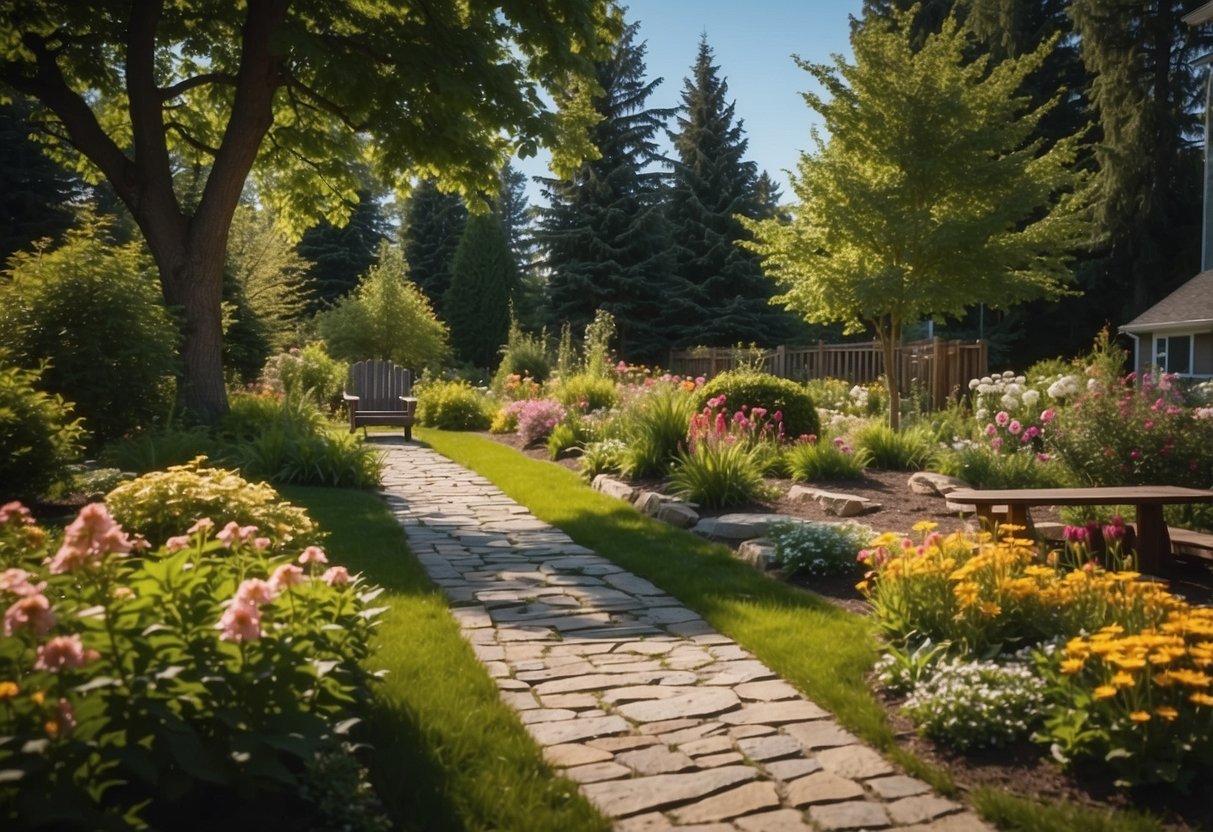
Incorporating creative landscaping ideas can elevate your home’s exterior and create a beautiful focal point. From water features and cozy walls to colorful plantings, there are endless ways to design a stunning front yard that you’ll love coming home to.
1) Modern minimalist planters
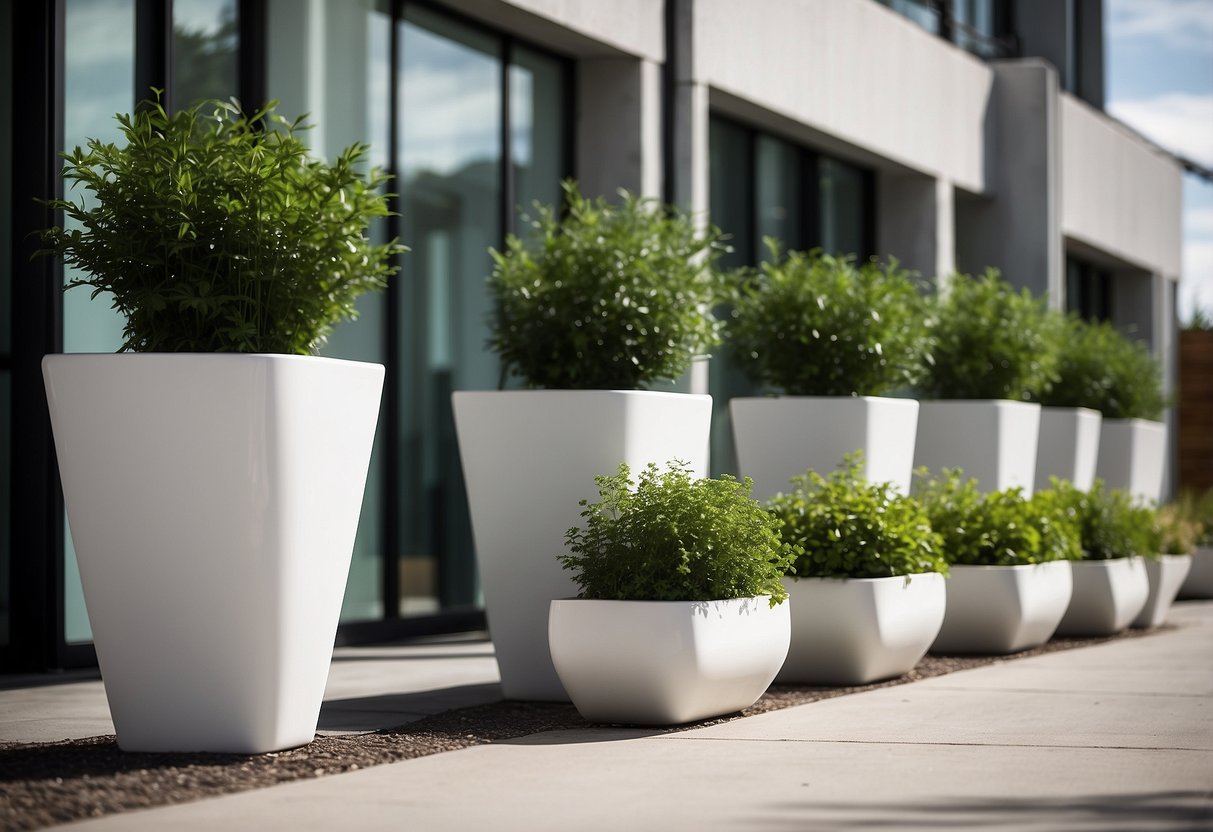
Modern minimalist planters can transform your front garden into a sleek and stylish space. Using materials like concrete and metal, these planters give a clean and contemporary look.
Choose succulents and ornamental grasses for easy-care, high-impact plants. Their architectural shapes add both beauty and simplicity to your garden. For more ideas, check out some contemporary front yard landscaping ideas.
Finally, consider geometric shapes for your planters. They add interesting lines and create a cohesive design that stands out while remaining elegant.
2) Rustic Wooden Benches
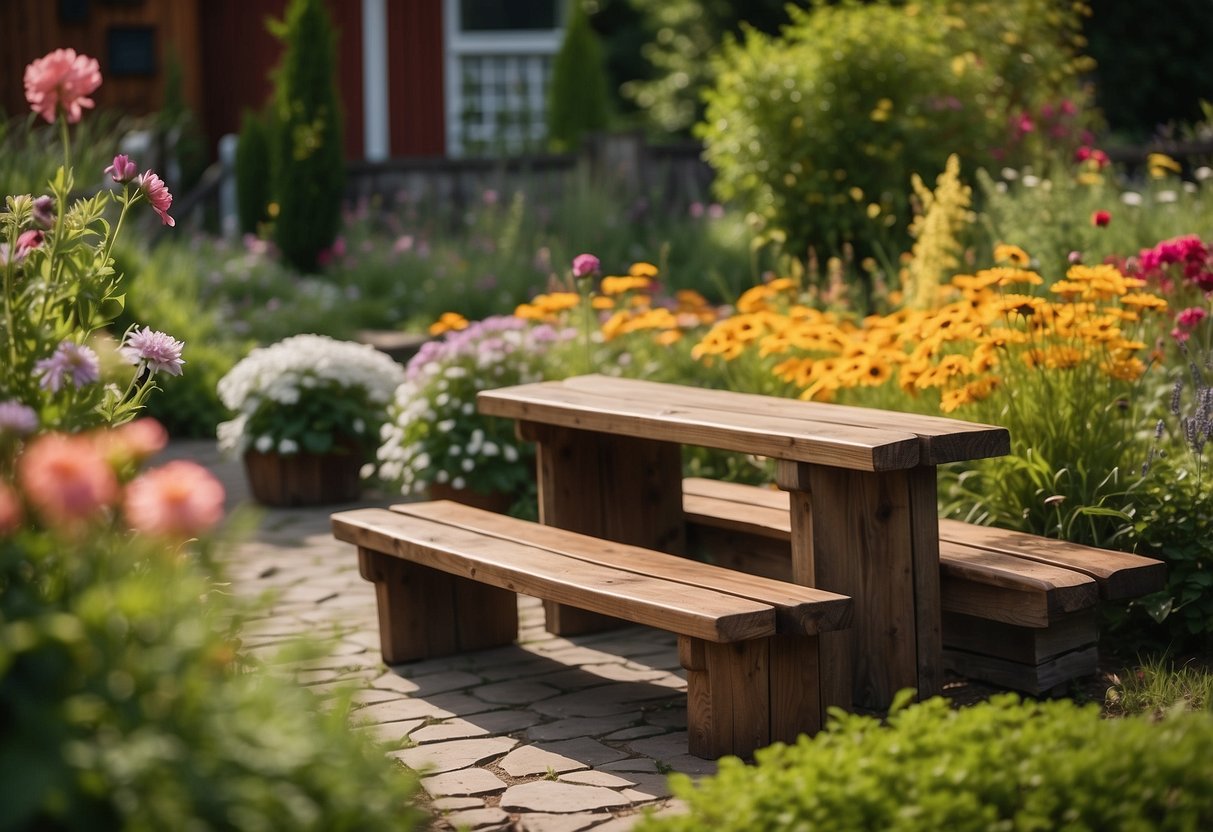
Rustic wooden benches can add a charming touch to your front garden. They blend well with natural surroundings and provide a cozy place to sit and enjoy your outdoor space. You can place them under a tree or near your flower beds.
Consider a reclaimed wood bench for a vintage look. These benches are not only eco-friendly but also easy to make as a DIY project. You can customize them to match the style of your garden.
3) Colorful Perennial Flowers

Adding colorful perennial flowers to your front garden boosts its beauty. Flowers like lavender provide a sea of purple, great for zones seven through nine.
Consider astilbes, available in shades like pink, white, and red. They thrive in shady, moist spots.
You may also enjoy planting bleeding hearts for their unique look and easy maintenance in shady areas. These flowers can add a striking pop of color to your garden.
4) Zen Garden Elements

Creating a Zen garden in your front yard can bring peace and beauty to your home. Start with raked gravel patterns. These mimic the flow of water and add to the tranquil vibe.
Incorporate a simple water feature surrounded by pebbles for a soothing touch. The sight and sound of water help create a calming atmosphere.
Add some greenery with tall grasses or small shrubs. These soften the landscape and make it feel more inviting. For more ideas, check out these beautiful Zen garden designs.
5) Vertical Garden Walls

Vertical garden walls can transform any front garden into a lush, green space.
You can use wall planters to grow flowers, herbs, or even small vegetables. This method is especially great if you are short on space.
For a creative touch, consider using a wood slat fence with planters from The Spruce.
Reclaimed materials make excellent vertical gardens. For example, a strawberry tower garden from Get Busy Gardening can be a charming addition.
Hanging plant displays are another option. They can add height and interest to your garden.
6) Low-maintenance succulents

Succulents are perfect for a front garden in Canada. They don’t need a lot of water, which makes them easy to care for. You can find many types that thrive in different conditions.
Try using sedums and hens-and-chicks. These plants look great and can handle the cold. They also add a unique texture to your garden.
Arrange your succulents around rocks or in gravel. This setup not only looks stylish but also helps with drainage. You’ll love how little effort it takes to maintain such a beautiful garden.
For more ideas, check out front yard succulent garden landscape ideas.
7) Native Canadian Shrubs
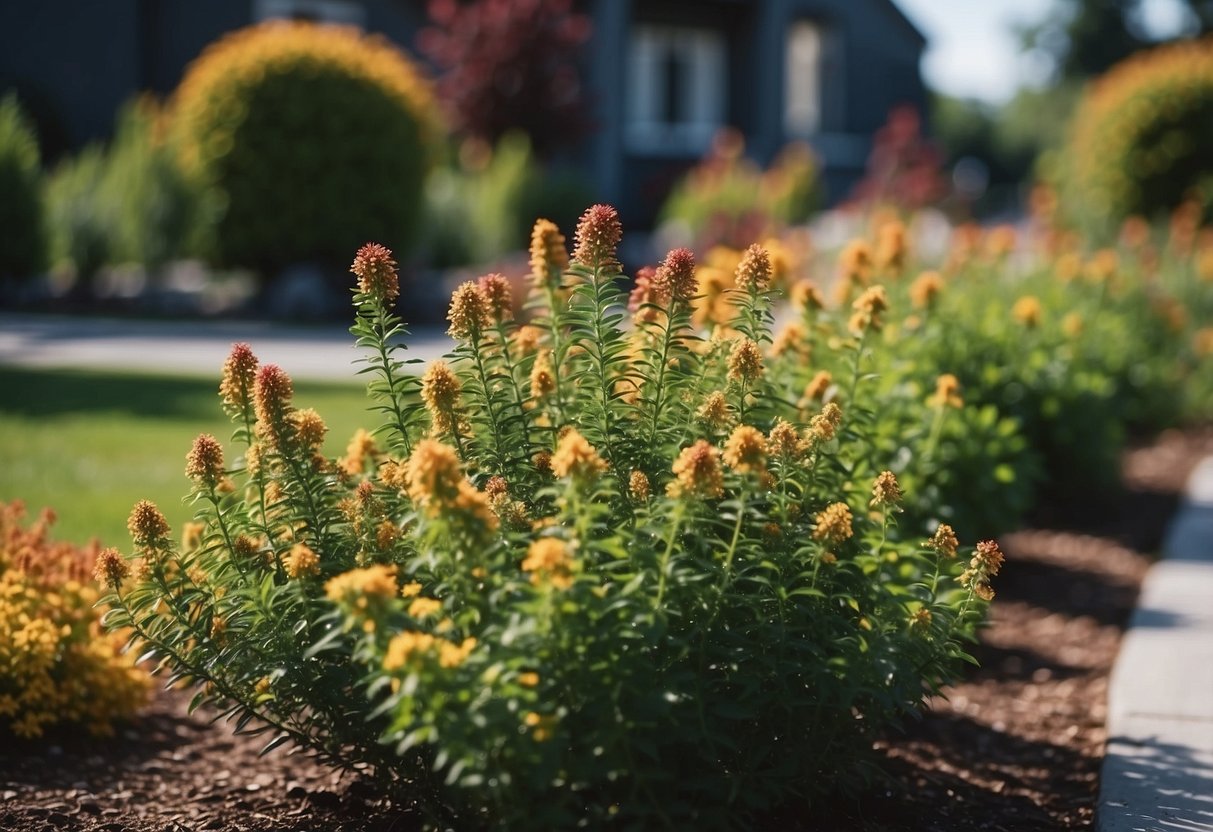
Using native Canadian shrubs in your front garden offers many benefits. These plants are well-suited to local climates and support local wildlife.
Consider the serviceberry, which thrives in part shade to full sun and offers beautiful white blooms in early spring.
The highbush cranberry is another great choice, known for its bright red berries and suitability for moist, well-drained soil.
Planting these native shrubs can transform your garden into a beautiful and eco-friendly space.
8) Charming bird baths
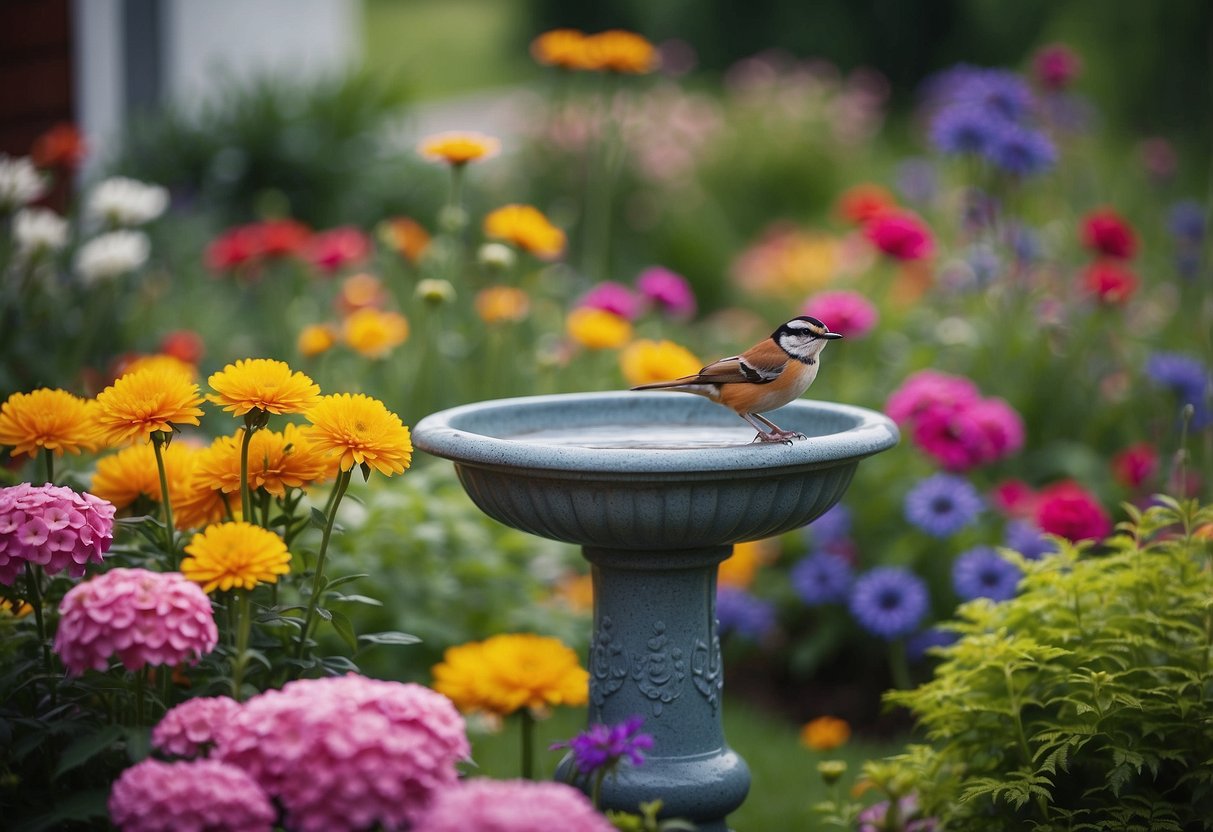
Adding a bird bath to your front garden can attract lots of birds, making your garden lively and entertaining. A mosaic bird bath is a colorful option. By using broken tiles or glass, you can create unique designs that will add both art and functionality to your space.
Consider a decorative garden bird bath with tiny lily pads and a bird perched at the edge. This kind of bath can be an eye-catching centerpiece. Alternatively, a Stone Fiberclay Bird Bath adds a natural touch with its intricate engraved flowers.
9) Vegetable garden boxes
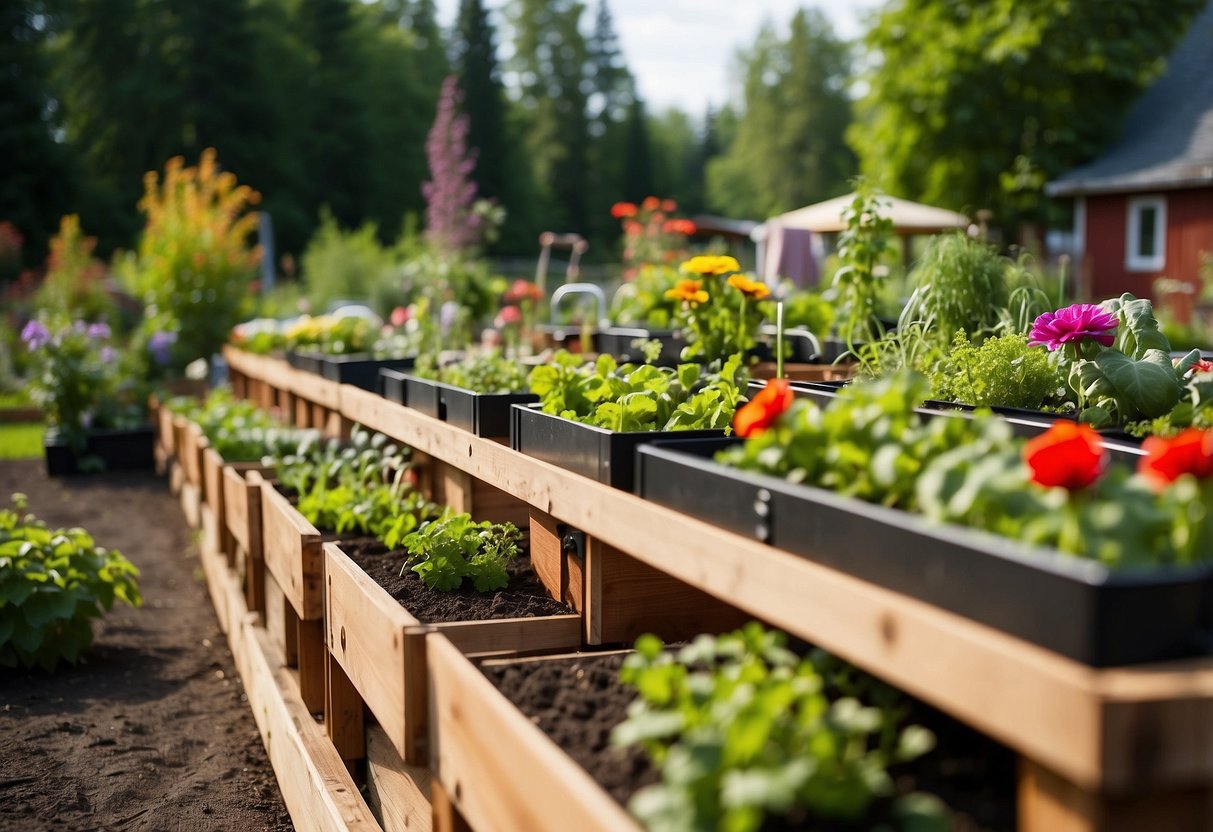
Vegetable garden boxes are a great way to grow your own veggies in a neat and organized manner. They can be placed anywhere in your front yard and look attractive too.
Using raised beds can help improve drainage and reduce pests. It’s also easier to manage soil quality in these boxes.
You can find various designs and sizes that fit both small and large spaces. Many people find these boxes ideal for growing veggies like tomatoes, peppers, and lettuce.
10) Stone Garden Pathways
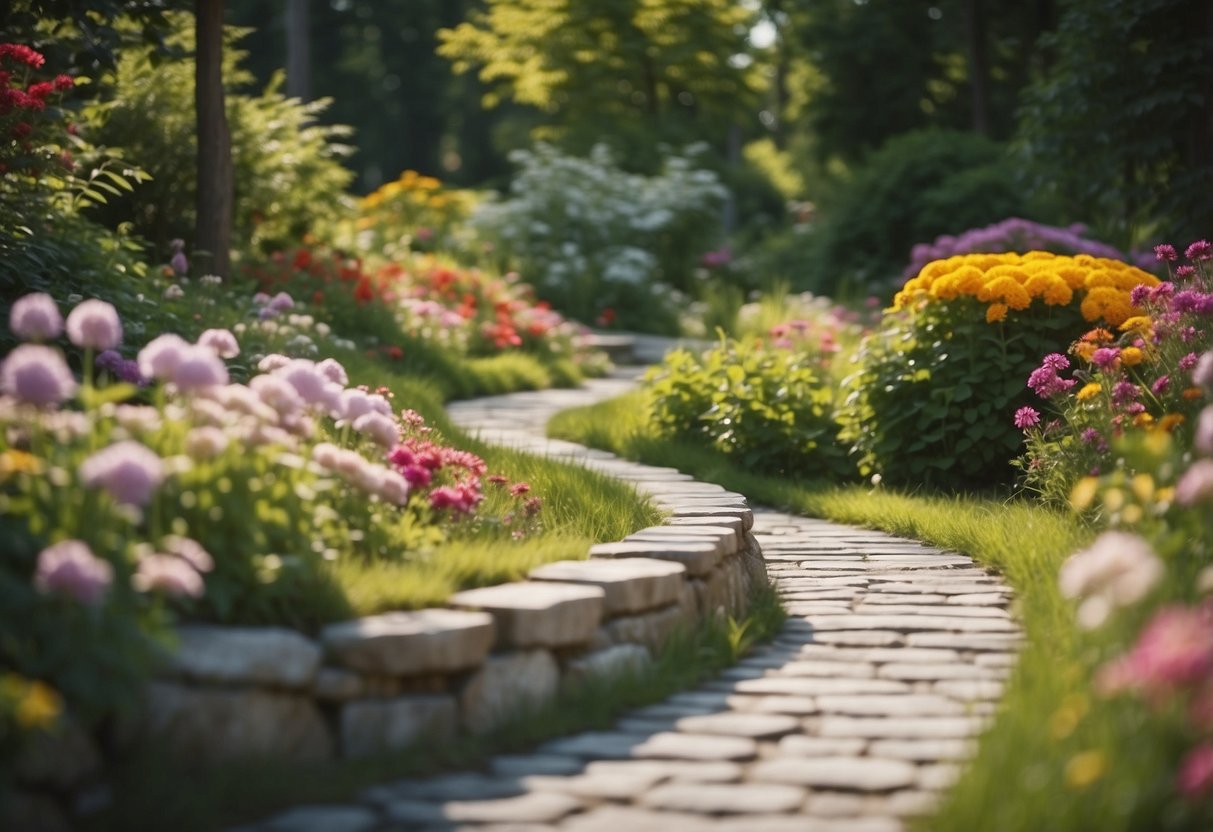
Stone garden pathways can add a timeless and elegant touch to your front garden. They are not only practical but also beautiful, guiding guests through your garden in a charming way.
You can use natural stepping stones, like those seen in Country Living’s stunning stone walkways, to create a rustic feel.
For a more creative look, consider a mosaic pattern or pathway, as suggested by Empress of Dirt. These designs can become a unique focal point in your garden.
Stone pathways are durable and require minimal maintenance, making them a practical choice for Canadian gardens.
Choosing the Right Plants

When planning your front garden in Canada, it’s important to choose plants that thrive in your local climate and soil. Native plants and a mix of perennials and annuals can ensure a beautiful and low-maintenance garden.
Native Canadian Plants
Opting for native Canadian plants can greatly benefit your front garden. These plants are well adapted to the local climate, requiring less water and maintenance. For example, the Eastern Redbud is known for its striking pink flowers in early spring. This small tree thrives in both full sun and partial shade, making it versatile for various garden spots.
Heuchera is another excellent choice, hardy to zone 4. It edges paths beautifully and is low maintenance. Including native shrubs like Canadian wild ginger and ground covers such as perennial thyme can add texture and year-round interest. These selections not only thrive but also support local wildlife, creating a sustainable garden ecosystem.
Perennials vs. Annuals
Incorporating both perennials and annuals in your garden offers a dynamic and long-lasting display of colors. Perennials, like Hydrangeas, provide structure and bloom year after year. Their long-lasting flowers can grace your garden even into the fall, with varieties suited for different light levels.
Annuals, such as petunias or marigolds, bring vibrant colors that can be changed each season. They fill gaps between perennials and add freshness. Mixing both types ensures continuous blooms and reduces the time you need for replanting. Perennials take root and come back stronger, while annuals offer flexibility and variety, allowing you to experiment with new colors and patterns each year.
Designing for All Seasons

Creating a garden that looks beautiful throughout the year requires careful planning. By choosing the right plants and design elements, you can make your front garden a visual delight in every season.
Winter-Resilient Gardens
In the harsh winter months, evergreens are your best friend. Evergreen shrubs and trees keep their leaves all year, offering constant greenery. Plants like boxwoods, fir trees, and junipers are great choices for adding structure.
Hardscaping elements like stone pathways or garden sculptures can also add interest when plants have lost their leaves. Cold-hardy perennials such as Hellebores and Winterberry can provide spots of color.
Plant these around entrances or focal points to make a bold statement even on the dreariest days.
Spring Blooms
When spring arrives, you want your garden to burst with color. Start with bulbs like tulips, daffodils, and crocuses. These are some of the first flowers to bloom and are easy to plant.
For added texture and height, consider flowering shrubs like azaleas and lilacs. They’re not only beautiful but also fragrant.
Mix in some perennial flowers such as peonies and pansies to keep the landscape vibrant. By layering plants with different bloom times, your garden can continuously display fresh blossoms throughout spring.
Make sure to place these colorful plants where they get plenty of sunlight to maximize their bloom potential.
Sustainable Gardening Practices
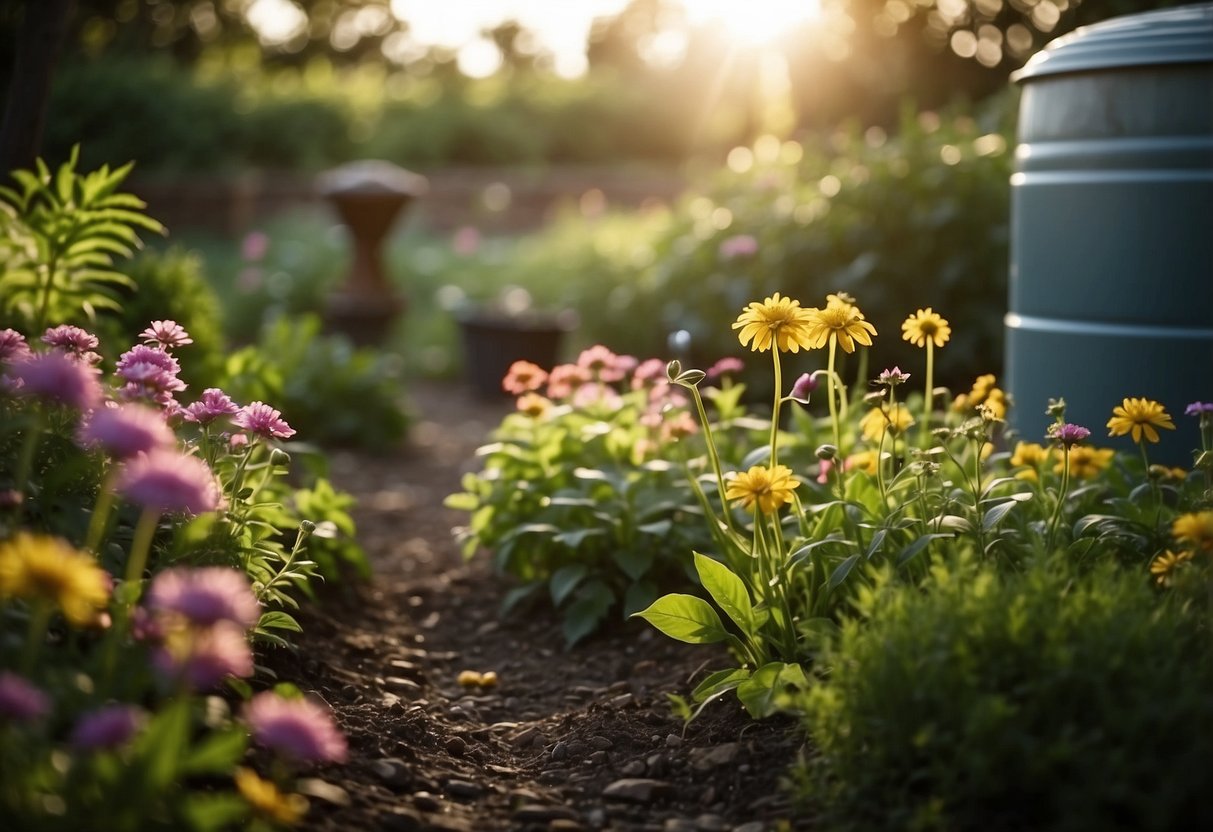
In Canada, sustainable gardening can boost the health of your garden while protecting the environment. Focus on water conservation and organic gardening to make a positive impact.
Water Conservation Techniques
Conserving water is crucial in sustainable gardening. Collecting and using rainwater is a smart way to reduce your reliance on municipal water. For this, you can install a rainwater harvesting system by placing large containers or water butts under your downpipes.
Using mulch helps retain soil moisture by preventing evaporation. Spread organic mulch such as wood chips or straw around your plants. This not only keeps the soil moist but also improves its quality over time.
Consider permeable surfaces for your hardscape projects. Materials like gravel or permeable pavers allow rainwater to seep into the ground, reducing runoff and erosion. Permeable surfaces are an eco-friendly way to manage rainwater.
Organic Gardening
Organic gardening avoids synthetic chemicals, promoting a healthier garden and environment. Composting is a key practice. Use kitchen scraps and garden waste to create compost, which enhances soil fertility. Compost adds nutrients that help plants thrive and supports beneficial microorganisms.
Natural pest control methods are essential. Encourage beneficial insects like ladybugs and bees by planting nectar-rich flowers. This helps manage pests without harmful pesticides. Additionally, use physical barriers such as row covers to protect plants from pests.
Crop rotation is another effective technique. Rotating different types of crops each year prevents soil depletion and reduces pest buildup. Growing a variety of plants together, known as companion planting, can also help control pests and improve soil health.
By focusing on these sustainable practices, you’ll create a thriving, eco-friendly garden in your front yard.







